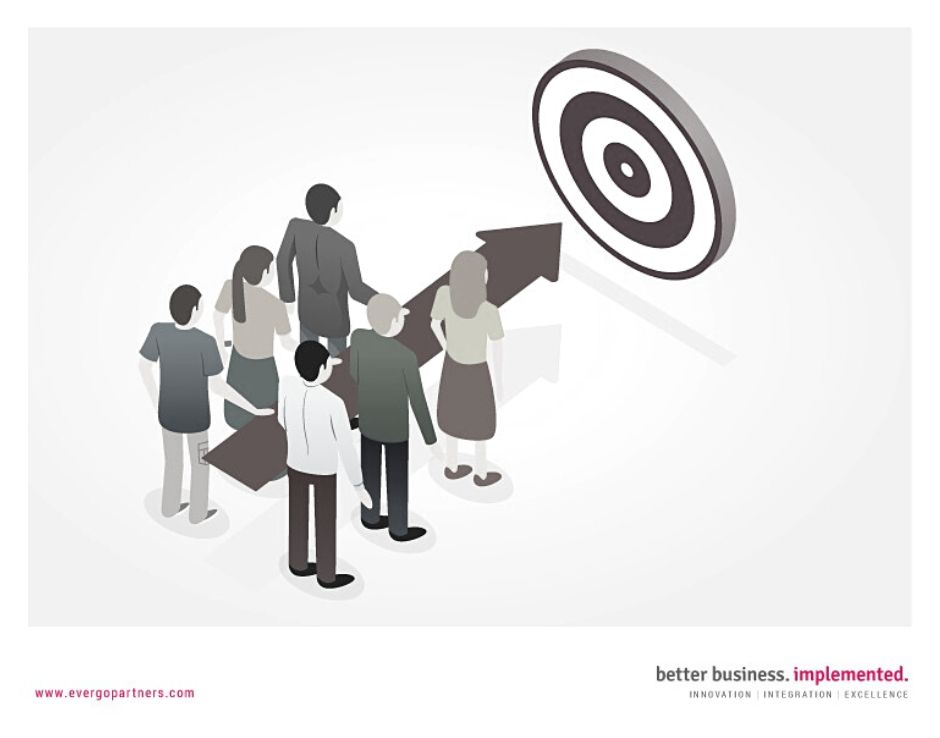Introduction
Enterprise Architecture (EA) delivers models and processes that ensure consistency and stability of service operations. Gartner suggests, it often takes 18 months to two years to get the EA practice up and running, and another one to two years after that to develop and refine it.¹

Business Challenges
Detailed spending and staffing metrics and insight into the performance of IT functions comes with experience and refining of the EA strategy roadmap often includes the below goals.
Unification of IT architecture and processes for flexible and efficient operations
Optimization is at the core of every architecture and process. Agile organizations developed EA roadmap which enables processes to be flexible enough to deliver consistent target results. Analysis are performed daily and any adjustments are made to deliver efficient operations across all business functions.
Frequently companies must establish the baseline maturity level to identify the potential redesign opportunities. We recommend to perform the ITIL maturity assessment and utilize results to identify custom fit IT strategy roadmap.
Transparent Governance of IT investment decisions
Transparency is the most often missing part in IT governance. The governance model should bring stakeholders together to collaborate in the practice and delivery of EA roadmap, and to provide oversight to the EA practice as a whole.
EA investment in metrics is needed to ensure monitoring of value to the organization and the business outcomes EA is driving. The metrics are used as part of the governance model and to drive continuous improvement of the EA strategy. EA metrics should evolve collaboratively around two characteristics — quantitative, linked to the business outcomes it is helping to guide, and qualitative, measuring the perceptions of its stakeholders. In some companies, there could be few more characteristics to monitor but it is important not to overcomplicate investment decisions.
Improved coordination of EA investments
EA investment coordination is a highly collaborative effort involving a wide range of stakeholders from across the whole organization, ranging from business executives to project managers. The involvement and support of these stakeholders are critical to the success of the EA roadmap. Relationships must be built and maintained, and stakeholders must be actively involved.
EA demands a wide range of competencies, ranging from relationship building and problem solving to deep technical skills. The EA team needs to recruit and develop individuals across the different EA viewpoints (business, information, technical and solution). The EA practice also requires a team sized to suit the demands placed on it, and provided with the right tools and management processes to support it.
EA Consulting
There are many benefits a well implemented EA team and strategy can bring – especially in the face of change as vast as this – including a reduced business risk associated with IT; better alignment of business strategy and implementation; increased flexibility and agility, and a generally more efficient IT operations.
The rise of the Internet of Things, and the latest transition into a more digital business orientated world, Enterprise Architects find themselves more in demand than ever before. Gartner estimated that, in 2013, the combined EA revenue of the top 10 global EA consultancies totaled about $2 billion, and projected that this amount will grow to $3 billion by 2016.²
Continuous rise of EA consultancy stems from an evolution away from traditional EA engagements that are primarily centered on documenting, reconciling and rationalizing IT systems. Today, leading global management and IT consulting firms are shifting focus, providing clients with business-outcome driven services, and helping clients deliver results amid ever increasing changes to the organization’s business and operating models.
Operational Consistency leads to stability and predictability
Operational consistency is derived mostly from creation of comprehensive IT optimization roadmap established with a single focus: Business Outcome Driven EA. During a business-outcome-driven EA engagement, an EA consultants help business and IT leaders to develop custom, actionable and deliverable recommendations to adjust the organization’s strategies, tactics, programs, projects, governance, risk and compliance to achieve targeted business outcomes. This approach empowers business and IT leaders to drive enterprise change, deliver high-impact value and lead the business forward in a competitive IT environment.
Best approach to tackle Operational Consistency issues is to constructively perform assessment of the current state, identify the areas of improvement, and aligned them with Enterprise Architecture roadmap. Our suggested methodology has always been to use ITIL maturity model as it provides structured and holistic approach to the entire organization. Maturity in ITIL terms is essentially a way of describing the extent to which a process or function exists and is under control. This is important because when an activity such as diagnosing and resolving incidents is subject to a controlled process (incident management), the activity and the outcomes are likely to be more:
- Efficient
- Effective
- Consistent
- Reliable
- Predictable
By adopting the ITIL methodology as one of the pillars of Enterprise Architecture roadmap, the organization can ensure that process activities are undertaken consistently, efficiently and effectively wherever they are conducted.
Bibliography
[1] Gartner „The Chief Enterprise Architect’s First 100 Days”
[2] Gartner „Predicts 2014: Enterprise Architect Role Headed for Dramatic Change”




